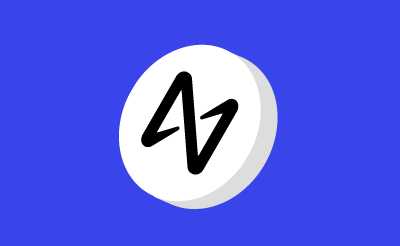Cartesi
Cartesi seeks to revolutionize ease-of-access to smart contracts by allowing developers to program using traditional, mainstream software stacks. Cartesi is also building to solve the prevalent issues of scalability and high fees on blockchains in order to create an environment that is conducive to the smart contract space.
What is Cartesi?
- Cartesi rather uniquely uses a side-chain called Noether that is optimized for ephemeral data – which exists only temporarily or briefly – in order to provide data availability to dApps at low cost.
- CTSI functions as a utility token in an analogous manner to GAS for Ethereum network transactions.
- CTSI tokens are also used to incentivise the validation and security of the CTSI network because it uses a Proof-of-Stake (PoS) consensus mechanism. This means users who stake CTSI receive rewards in-kind by participating in the network.
- CTSI also uses Descartes Rollups, which are a variant of optimistic rollups that run on a Linux VM rather than Solidity. In effect, this is a layer 2 which means that computationally heavy transactions are offloaded, reducing the congestion of the network. This allows for ‘million-fold’ computational gains as compared to Ethereum without any compromise on the security of the blockchain.
Key Metrics
| Ticker | CTSI |
| Token Name | Cartesi |
| Token Type/Protocol | CTSI |
| Total Token Supply | 1,000,000,000 |
| Current Circulating Supply | See Coinmarketcap |
| Market Capitalisation | See Coinmarketcap |
| Token Creation Date | 2018 |
| Can it be mined? | No |
Who is behind Cartesi?
Cartesi was incepted in 2018 by Augusto Teixeira , Diego Nehab, and Colin Steil. Combining rich research and engineering experience at household names such as Microsoft Research, with pedigrees and PhD’s from the likes of ETH Zurich and Princeton. Initially seeking to create a decentralized AI market for data science needs, they evolved the scope of their project to a full-fledged layer-2 in order to address the issues of scalability, speed, and infrastructure for the blockchain. Since then, they have expanded the team to over 30-men strong, each with varied experiences to flesh out their core competencies and bring Cartesi to the state that it is today.
What is the purpose of Cartesi?
Cartesi is a layer-2 structure designed to allow developers to program smart contracts with mainstream software; starkly different from conventional cryptocurrencies which require one to overcome the learning curve in familiarising themselves with new programming languages. Inherently, Cartesi also seeks to achieve scalability (easily available data at low transaction costs), security, as well as privacy (of sensitive data, such as in enterprise use or dApp usage. One unique characteristic of Cartesi is that it is blockchain-agnostic, meaning that it supports various chains natively, currently including the likes of ethereum, Binance Smart Chain, and Matic (Polygon).
Insights
- Descartes – Cartesi uses Descartes as a decentralized oracle for Ethereum-based smart contracts. In effect, Descartes allows computationally heavy tasks to be executed off-chain. This allows computations that are fully verifiable while increasing the throughput of the network. Descartes is currently already live, and implemented in various projects including:
- Creol Environments – a carbon-neutral building control system using CTSI to make their system more fraud and tamper resistant
- SimThunder – a sim racer which allows the trade of valuable NFTs using the Descartes SDK
- Carti – an infrastructure endeavour that aims to allow developers increased access to the Cartesi Machines in order to provide them a better development experience.
- Descartes rollups – an implementation of Cartesi rollups, which allow smart contracts to be built using traditional, or mainstream software stacks that allows increased accessibility for developers who no longer have to learn a new programming language to enter the CTSI ecosystem.
- Noether – a side-chain designed to increase temporary data availability, which is a major limitation of most traditional blockchains. This allows dApps to have high throughput and store large files with drastically reduced fees. This side-chain operates on Proof-of-Stake which means that CTSI users can stake their tokens and receive rewards as an incentive for ensuring the security, and participating in the network.
Risks
- Cartesi, like any layer-2 (or any token at all) is highly contingent upon its adoption. Given the highly competitive landscape with a whole variety of projects focused upon side chains and Plasma solutions, this means it will be contingent upon Cartesi’s ability to take on reputable partnerships and attract users into its space. However, this is not limited to just Cartesi and as of early 2021 there are currently ideal technical solutions brought to market.
- Cartesi currently has a staking participation rate of ~20%, representing the proportion of tokens in circulation that are validating the network. Higher participation rates (up to a certain extent) are usually considered better, however, the most important thing is the extent to which CTSI is decentralized and held across multiple validators rather than the participation rate in isolation.
News and Updates
- Cartesi recently announced that it joined the Blockchain Game Alliance, solidifying its position as a layer-2 for users to develop, publish, and play decentralized games.
- Cartesi releases a research article for Texas Hodl’em – a version of Texas Hold’em Poker running on the Ethereum blockchain that is the first to run in a fully decentralized manner to demonstrate the utility of CTSI in the gaming industry.
Community & Whitepaper Links
- Official Website: https://cartesi.io/
- White Paper: https://cartesi.io/docs/intro
Disclaimer:
All investment is speculative and involves substantial risk and uncertainty. Investors should understand the nature of digital assets including the terms of return and the risk of assets. We encourage investors to fully understand the assets and the risk associated with them prior to making any investment.



